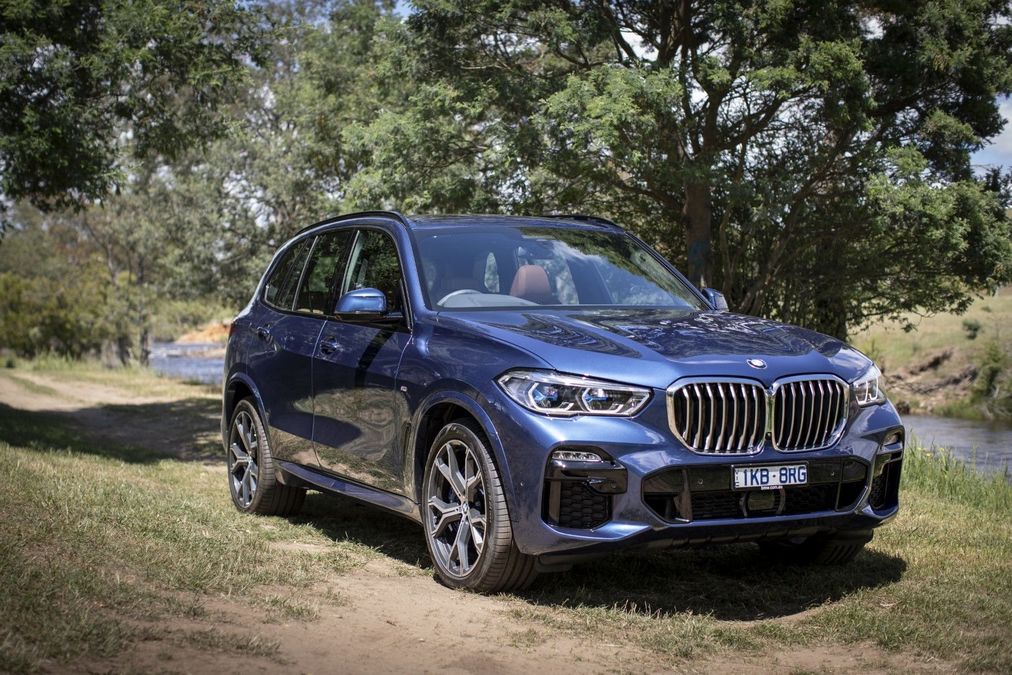It’s hard to imagine that there was a time when the concept of a “luxury SUV” was considered sacrilege by BMW enthusiasts. Today, the X5 is BMW Australia’s top selling car, and SUVs make up 60% of the firm's sales.
Yet despite their popularity, luxury SUVs can often be hit-or-miss when it comes to the driving experience – adding all that extra size and weight often comes at the expense of handling, and the luxury end of the market tends to not compensate with significant off-roading capabilities either.
It’s only on the back roads of Tasmania that you truly begin to appreciate the work put in by BMW to continue the X5’s legacy of being an almost car-like SUV when it comes to dynamics.
BMW chose Launceston for the X5's local launch, where we were able to sample the M30d, and the top of the line M50d. Both models are diesel and they make up approximately 70% of all sales, however there is a petrol model (the M40i) being released late next year.
So, what’s the new X5 like to drive?
Today’s modern luxury cars are truly half computer and half machine, and the BMW X5 is no exception - for example, two 12.3-inch digital displays replace the analogue odometer and rev dials of yesteryear with a tapestry of high definition pixels.
This high-tech approach is also apparent in the driving experience, with a range of on-board computers working in symphony to keep you glued to the road. Grip from the chunky 19 or 20-inch tyres is incredible, and you can really push the X5 into corners and rely on the all-wheel-drive system to pull you through.
Starting from $112,990, the M30d features a plethora of other tech as standard, with top of the line sat-nav, a panoramic sunroof, heads-up display, adaptive LED lights and full leather upholstery.
The only two options we’d recommend are the M-sport pack and the air suspension. Compared to the standard suspension, the air suspension was significantly smoother and more supple.
There’s also a handy reversing assistant that will let you ‘rewind’ the last 50 meters of your drive – perfect if you’ve got a narrow winding driveway or need to get out of other tricky parking situations.
For the first time ever, BMW is also offering an off-road pack for an extra $7,500, however they don’t expect a large uptake. After all, the X5 is designed to manoeuvre the local mall and school car park more than the outback.
For most drivers, the M30d is plenty of car – the engine is smooth and quiet, but can also be punchy when you need it to.
At the top end, the M50d starts at $149,990 and adds a more powerful engine and approximately $27,000 worth of extras including kit for better sports handling, a stiffer sports suspension, an upgraded Harman/Kardon sound system and 22-inch wheels. For audiophiles, there's also the option to upgrade to a Bowers and Wilkins sound system.
The M50d is more of a brute, with 4 turbochargers giving you some serious power to tap into. Like it’s more restrained sibling, the M50d also feels solid on the road where other SUVs can feel boat-like.
The upcoming xDrive40i will share the same equipment as the xDrive30d, with almost the same pricing – the petrol variant starts at $115,990, while the diesel model comes in a hair less dear at $112,990.
Powering the BMW X5 xDrive40i is a 3.0-litre, six-cylinder inline turbocharged petrol engine generating 250kW of power and 450Nm of torque, good for 0-100km/h in just 5.2 seconds.
There’s no doubt that the X5 will continue to be a popular model for BMW and a mainstay on the roads of our capital cities. The new variants improve on the mould for the outgoing X5 range, adding in small improvements but keeping the X5’s core competency as a car-like SUV very much alive.








Hi Guest, join in the discussion on First drive: the 2019 BMW X5